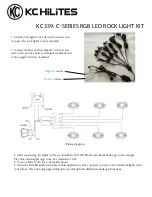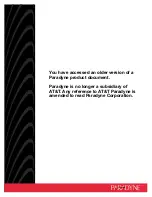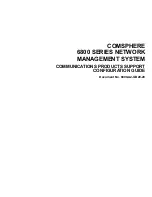
4
Inductive Sensors
Correct Use
Designing
Power Reset Time
The Proximity Sensor is ready to operate within 100 ms after power
is supplied. If power supplies are connected to the Proximity Sensor
and load respectively, be sure to supply power to the Proximity Sen-
sor before supplying power to the load.
Effects of Surrounding Metal
When mounting the E2F-D within a metal panel, ensure that the
clearances given in the following table are maintained.
(Unit: mm)
Power OFF
The Proximity Sensor may output a pulse signal when it is turned
OFF. Therefore, it is recommended that the load be turned OFF
before turning OFF the Proximity Sensor.
Power Supply Transformer
When using a DC power supply, make sure that the DC power supply
has an insulated transformer. Do not use a DC power supply with an
auto-transformer.
Wiring
High-tension Lines
Wiring through Metal Conduit
:
If there is a power or high-tension line near the cable of the Proximity
Sensor, wire the cable through an independent metal conduit to pre-
vent against Proximity Sensor damage or malfunctioning.
Cable Extension
Standard cable length is less than 200 m.
The tractive force is 50 N.
Mounting
The Proximity Sensor must not be subjected to excessive shock with
a hammer when it is installed, otherwise the Proximity Sensor may
be damaged or lose its water-resistivity.
Do not tighten the nut with excessive force. A washer must be used
with the nut.
Maintenance and Inspection
Periodically perform the following checks to ensure stable operation
of the Proximity Sensor over a long period of time.
1. Check for mounting position, dislocation, looseness, or distortion
of the Proximity Sensor and sensing objects.
2. Check for loose wiring and connections, improper contacts, and
line breakage.
3. Check for attachment or accumulation of metal powder or dust.
4. Check for abnormal temperature conditions and other environ-
mental conditions.
5. Check for proper lighting of indicators (for models with a set indi-
cator.)
Never disassemble or repair the Sensor.
Environment
Water Resistivity
The Proximity Sensors are tested intensively on water resistance, but
in order to ensure maximum performance and life expectancy avoid
immersion in water and provide protection from rain or snow.
Operating Environment
Ensure storage and operation of the Proximity Sensor within the
given specifications.
Inrush Current
A load that has a large inrush current (e.g., a lamp or motor) will
damage the Proximity Sensor, in which case connect the load to the
Proximity Sensor through a relay.
<SUITABILITY FOR USE>
OMRON shall not be responsible for conformity with any standards, codes, or regulations that apply to the combination of the products in the
customer’s application or use of the products.
Take all necessary steps to determine the suitability of the product for the systems, machines, and equipment with which it will be used.
<CHANGE IN SPECIFICATIONS>
Product specifications and accessories may be changed at any time based on improvements and other reasons. Consult with your OMRON
representative at any time to confirm actual specifications of purchased product.
Type
Dimension
M12
M18
Non-shielded
l
15
22
m
20
48
d
40
70
D
15
22
n
40
70
l
m
n
m
D
d dia.
l
Type
Torque
M12
1.5 Nm
M18
2.0 Nm
In the interest of product improvement, specifications are subject to change without notice.
Cat. No. D15E-EN-01
OMRON EUROPE B.V.
Wegalaan 67-69,
NL-2132 JD, Hoofddorp,
The Netherlands
Phone: +31 23 568 13 00
Fax:
+31 23 568 13 88
www.eu.omron.com






















